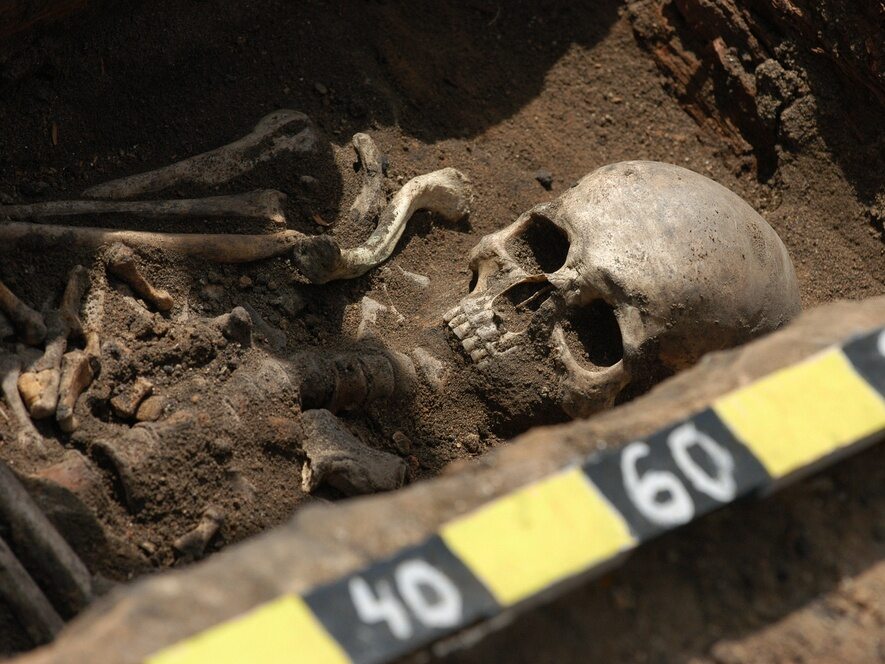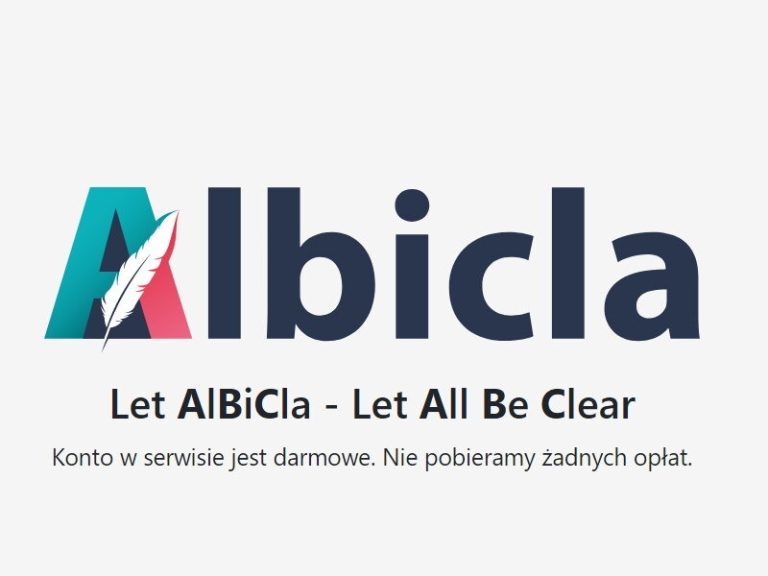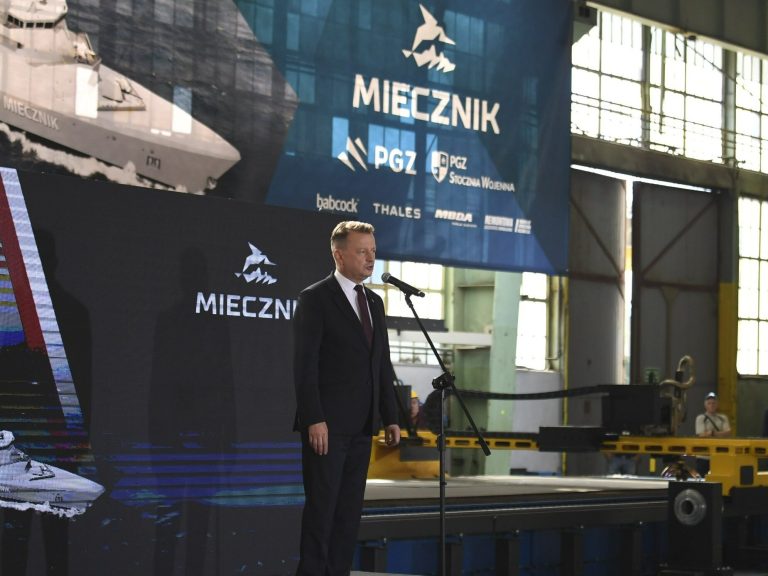What does a forensic archaeologist do? “It is invaluable help in the search for hidden corpses”

Is forensic archaeologist an interesting profession? What does he do during the investigation? How do I get the skills to do this job? These and other questions were answered by Prof. Maciej Trzciński, an outstanding lawyer and specialist in the field of forensic archaeology.
Rafał Borowski, Wprost: To put it simply, criminology is a legal science whose aim is to develop methods of detecting crimes and their perpetrators. So what is forensic archaeology? Is it a subfield of archeology or forensics?
Prof. Maciej Trzcinski: Something in between. We are familiar with such concepts as forensic medicine, forensic chemistry, forensic toxicology and forensic anthropology. Finally, it’s time for forensic archaeology. We deal with forensic sciences – including archaeology – when the methodological workshop developed by a given discipline of science finds its application in a situation where we are dealing with a legal problem.
In the case of forensic archaeology, this usually applies to criminal cases. Forensic archeology – both in Poland and in the world – is primarily activities related to the search for hidden corpses, and in a broader context, searching for missing persons.
Just look at the case of Iwona Wieczorek, who has recently been revived in the media. Ground-penetrating radar, which is one of the tools used by forensic archaeologists, was used for the search, or rather ground penetration.
I have the impression that in Poland the activity of forensic archaeologists is rather associated with the detection of war and communist crimes. For example with searches for victims of judicial murders in the meadowone of the quarters of the Powązki Military Cemetery in Warsaw.
Yes, in Poland the activity of forensic archeology looks a bit different than in Western European countries, which is related to our recent history. Let me remind you that under Polish law, war and communist crimes do not expire. These cases are handled by the investigative division of the Institute of National Remembrance.
In Western Europe, forensic archaeologists deal with crime – colloquially speaking – “here and now”. Every year I take part in meetings with colleagues from abroad. One of them said that he was currently searching for the corpse of a boy whose father had murdered him, but the latter did not want to indicate where the corpse was hidden.
In Poland, we also have several experts in the field of forensic archaeology, who cooperate with the police when dealing with a criminal disappearance. A forensic archaeologist is invaluable in finding hidden corpses.
There is one more archaeological activity which, following the example of Western European countries, also functions in Poland. It’s about reconstructing the causes of air accidents. Since 2019, an interdisciplinary team has been operating, which, in addition to forensic technicians and forensic doctors, also includes forensic archaeologists.
Thanks to this, the visual inspection can be carried out in a comprehensive way, which allows you to answer the essential questions regarding the forensic version. In other words, whether we are dealing with an unfortunate accident, a terrorist attack, or maybe a pilot error. The quality of the inspection is absolutely fundamental.
Simply, the better we do them, the faster we will answer the question of what really happened. Moreover, in many countries, forensic archaeologists participate in the inspection of the sites of all mass disasters. Not only aviation, but also construction or land traffic.
Please explain graphically what methods are most often used in the work of forensic archaeologists? For example, a forensic anthropologist deals with e.g. reconstructing the life appearance of the face on the basis of the skull – which was the case with remains of Nicolaus Copernicus – which can be made using the drawing method, using plastic mass or computer graphics.
As for typical methods, archaeologists are primarily good at locating – especially in the open – places that have some anomalies. It’s about selecting suspicious places where we have an embankment, depression or change in vegetation. For this purpose, we very often use laser scanning of the terrain and analysis of aerial photos.
After selecting such suspicious places, we move on to excavation methods, “to the shovel”, i.e. what is most often associated with archaeology. We carry out survey excavations and geological drillings, which are common in every sub-field of archaeology.
It is worth noting that both today’s archeology and forensic science are developing very dynamically, which results from the development of new technologies. A good example are the achievements in the field of the aforementioned geophysics, i.e. laser scanning of the terrain. On the other hand, the analysis of aerial photographs is very helpful when we are to find a mass grave. And this is happening in Ukraine. It was the aerial photos that made it possible to quickly determine where the mass grave in Bucza was located.
There is one more aspect to the work of forensic archaeologists. We are talking about exhumations, i.e. taking the corpses. After locating a mass grave or a single grave, forensic archaeologists are good at documenting the entire process of stratification, determining the time of digging this grave pit and the modus operandi of the perpetrators.
However, a forensic anthropologist and, in my opinion, a forensic physician must also participate in the exhumation process. It is their task to pick up the remains and transport them for further research. The team, which includes an archaeologist, anthropologist and a forensic doctor, is ideal in this case.
Speaking of exhumations – although this question concerns forensic medicine – if no soft tissues have been preserved, i.e. just the skeleton, can you determine the cause of death if it was not a mechanical injury, e.g. a knife stab wound, let’s say poisoning ?
Of course, such research makes sense. In the 1980s, a very interesting publication was created on this subject: “Detektywi na tropach zagadek historie” (Detectives on the trail of the riddles of history). Its author is prof. Jan Widacki, who for many years was the head of the Department of Criminalistics at the University of Silesia in Katowice. It contains information on the results of the exhumation of the remains of famous Poles, such as King Casimir Jagiellon.
Visual examination of the bone material makes it possible to determine whether the damage to the remains was inflicted ante mortem (Latin. before death – ed.) or postmortem (after death – ed.). I refer here to very interesting publications devoted to exhumations from gladiator cemeteries in Italy.
Especially now, when new technologies and genetic research are developing, only on the basis of examination of bone material we are able to determine not only the cause of death, but also, for example, the origin of the deceased or his diet. In this case, forensic toxicology is very helpful. In the bones we have information, for example, about cyclic poisoning with cyanide.
I have come across opinions that in our country forensic archaeologists are treated with neglect by law enforcement agencies. Moreover, they are more willing use the services of clairvoyants in investigations than forensic archaeologists. Is this an exaggeration or a sad reality?
Unfortunately, this is the case in Polish conditions. I think it’s because law enforcement still doesn’t know enough about archeology as a science. Traditional archeology is associated by the average policeman and prosecutor with the pyramids in Egypt or Indiana Jones. Unfortunately, I know what I’m talking about because I often encounter this environment.
Fortunately, that is changing. I have seen progress over the last ten years. The facts are, however, that the institution that most often uses forensic archeology is still the Office of Search and Identification of the Institute of National Remembrance. At the moment, a dozen or so archaeologists work there full-time.
For the situation to change, i.e. for it to look like in the Netherlands, England or Germany, the level of education in police schools must change. In short, forensic archeology needs to be more recognizable to those who can benefit from it in practice, namely law enforcement.
As adopted at the end of the year amendment to the Penal CodeThe statute of limitations for the crime of murder has been extended from 30 to 40 years. In the professor’s opinion, can this change turn out to be an impulse that will result in an increase in the importance of forensic archaeologists in criminal proceedings?
I don’t think so. By the way, this opens up a field for discussion about the statute of limitations itself. There were demands in the legal community that in the case of the crime of homicide, the statute of limitations period should be abandoned altogether, as in the case of war crimes.
The question then arises whether this motivates or rather demotivates law enforcement. Some believe that when the clock is ticking, law enforcement should act promptly. If there is no statute of limitations, there is a risk that law enforcement becomes lazy and ineffective.
Finally, I would like to ask about an issue that may be of particular interest to younger readers facing the choice of their professional path. What education do you need to get to become a forensic archaeologist?
First of all, such a person must complete five years of archaeological studies. You can’t do this job without being an archaeologist. At some universities, including the University of Wrocław, there are already master’s seminars in forensic archeology or there are dedicated lectures. In short, this kind of specialization is born.
If it is not possible to specialize in this field during archaeological studies, it is possible to complete additional studies. At the University of Wrocław, we conduct inter-faculty studies in forensic archeology in the form of one-year postgraduate studies.
For this purpose, the Faculty of Law, Administration and Economics of our university concluded an agreement with the Faculty of History and Pedagogy and the Medical University of Wrocław. The teaching staff consists primarily of archaeologists, lawyers, forensic scientists and forensic doctors. Completion of these postgraduate studies should enable entry into the list of court experts.
What are the employment prospects? I will ask directly – is there a real chance that practicing the profession of forensic archaeologist will be the only source of income?
I warn you that this is a niche specialization and it is the same in other countries. We have a small group of specialists in this field. I estimate the number of forensic archaeologists who work in the profession across Europe at 60-70 people. For example, there were three such specialists in the Netherlands last year.
When it comes to the prospects of finding a permanent job, the Institute of National Remembrance comes to mind first, where, as I have already mentioned, 10-12 full-time archaeologists have appeared in recent years.
I imagine that one could also find employment in the police, and more precisely in the forensic technology department, as is the case, for example, in Bundeskriminalamt (German: Federal Criminal Office – ed.) in Germany. In short, to be a forensic archaeologist working for the police.
The prospect of working abroad in various humanitarian organizations that conduct search activities around the world also opens up.
Maciej Trzciński: PhD in law, professor at the University of Wrocław. Head of the Criminalistics Department at the Faculty of Law, Administration and Economics at the aforementioned university. His scientific interests focus on the law of protection of cultural heritage, crime against monuments and forensic archaeology. He is a member of the Polish Forensic Society, the Scientific Association of Polish Archaeologists, the Polish Committee of the International Council for the Protection of Monuments and the Forensic Archeology – Work Group within the structures of the European Network of Forensic Sciences. He is the author or co-author of many scientific publications, such as the textbook “Forensic Archeology in Theory and Practice”, the second, extended edition of which will be published in the first half of this year.






